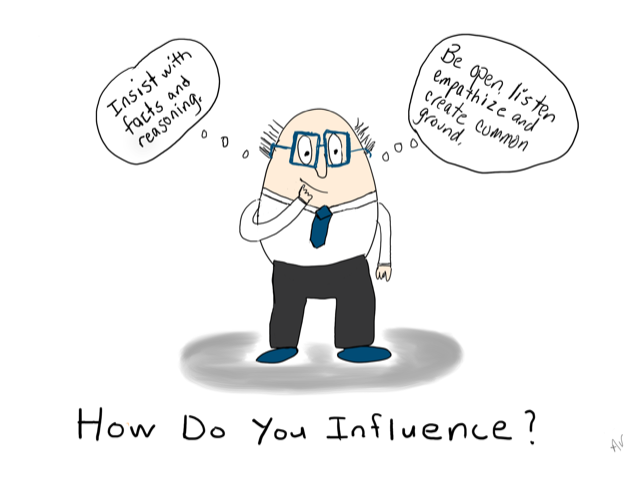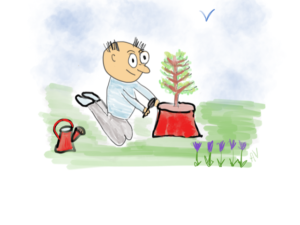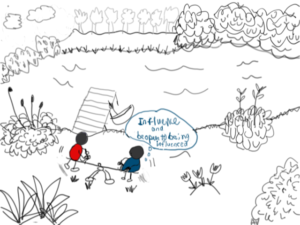
“People generally see what they look for and hear what they listen for.”—Harper Lee
Arun, a project leader could not understand why he was not able to convince colleagues of the urgency required to develop a new technology. In the same way, Jerry, another leader, was frustrated. Despite all the facts and data he provided making the case for a change in the procurement process, it seemed to go unnoticed. Both of these leaders had years of experience at senior levels in organizations. They had strong track records in implementing goals. However, they were frustrated that they were not influential in garnering support for what they knew was “right” for their organizations. Colleagues shared that they appreciated the intelligence and ability to get things done of these leaders. However, they did not get high marks on their ability to influence or emotional intelligence. Arun and Jerry are not alone. Implementing and influencing are different skills.
Often we try to convince people of our view by sharing research, data and statistics. You believe global warming is a problem, you share compelling facts with your colleague or friend and can’t understand why the person is not realistic and adheres to your view. We see a lot of polarization in workplaces and families around myriad issues. The division takes energy that could be used for collective innovation and creativity.
It is becoming clear that we can’t change views by simply providing data and facts. It is particularly challenging these days when we all have Google at our side and we can find data to support any view. Since we each gravitate and in essence are rewarded by information that supports our views, it is hard to influence others with facts and information. This confirmation bias limits our openness to different views.
When we take actions based on our beliefs, such as voting for a candidate, we become even more convinced that our perspective is right. The more we believe we are “right” the harder it is for us to consider other views.
When trying to influence others, we need to first be aware of our view and recognize that we have biases and we could learn more. This openness and curiosity will have a profound effect on our interactions. While we know it from experience, our emotions and energy are contagious. If we believe we are right and that the other person “should” behave or comply, the other person senses our emotion and desire to “control” and naturally becomes defensive and gravitates even more strongly to their held view.
Anyone who has experience as a parent with a teen, or a manager will know the futility of telling another person to believe or do something. However, when we are curious, empathetic and open, we create the space for understanding. Our emotional state of openness becomes contagious and the other person is often less resistant. When we find common ground, the other person is less defensive and can become curious and open too. While we tend to focus on differences, we have a lot more common ground than we tend to realize.
Tali Sharot shares research in her book The Influential Mind that shows that as we interact with others our brain patterns become aligned. When study participants were working together on a project to make financial decisions, their brain patterns were aligned when they shared common ground and they were more open to influence. However, when pairs disagreed their brains became less sensitive to the information presented by the other. The studies suggest that by focusing on common ground and creating an emotionally positive environment, people are more open to influence.
Sharot explains that scientists were not able to convince parents to vaccinate their children by just sharing data. However, by emphasizing the common ground of care for children and the desire that they not suffer from horrible diseases, three times more people chose to vaccinate.
When we can catch our desire to tell or convince people and become open to listening and connecting emotionally and finding common ground, we are more likely to influence others. We need to be open-minded and engage in conversations where we are empathetic, listening and seeking common ground.
Both Arun, the project leader and Jerry, the leader supporting a new procurement system, were able to alter their strategies of trying to convince and shifted to being open-minded, curious, empathetic and finding common ground. They used the OASIS Conversations process and created a positive and productive environment and achieved their business goals.
Catch yourself when you are trying to control rather than influence others. Notice when you are not open and curious and resort to pushing and citing research without finding common ground and creating an open environment. Remember that emotions are contagious and you will benefit from being open yourself.
Contact us any time at Potentials.com.










